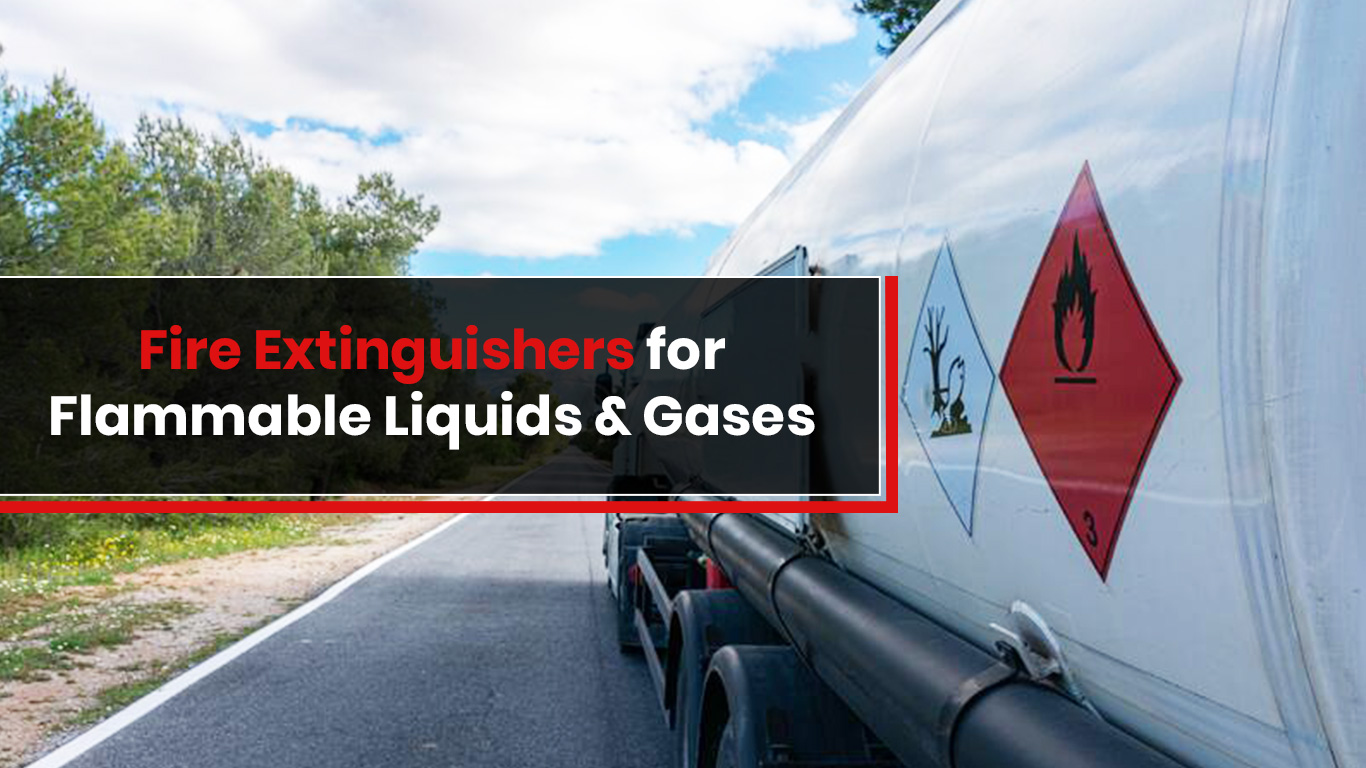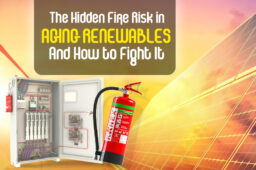Which Fire Extinguishers should be used for flammable liquids & Gases?
- March 28, 2022
Hundreds of lives and property can depend on the fact whether you have chosen the correct Fire extinguisher. This is especially true if the fire is caused by liable flammable liquids & gases. It’s important to know which gas is used to extinguish fire and understand the different fire extinguisher gases that work best for such situations. Among all Fire extinguisher types, the class B fire extinguishers can only put out this kind of fire. In the following section of this article, you will find out more about class B fire and the type of extinguisher that can put it out perfectly.
What is a class B fire?
A Class B fire involves flammable liquids or gases, which provide the fuel component of the fire triangle. The flammable liquids that can cause class B fire include oils, Diesel, Petrol, grease, alcohols, solvents, and oil-based Paints. The flammable gases are butane and hydrogen.
What type of extinguishers can put out class B fire
Due to the unique nature of the fuel of class B fires, the best way of handling this kind of fire is to cut off the oxygen supply to the fuel. Several types of Fire extinguishers can accomplish this task effectively.
CO2 Fire Extinguishers
Carbon dioxide fire extinguishers work perfectly on class B fires, as carbon dioxide can effectively cut off the oxygen supply. Not only that, but the cold carbon dioxide content of CO2 fire extinguishers also helps to reduce the heat of the flame. However, this kind of extinguisher is only effective for small fires.
Foam Extinguishers
This kind of fire extinguisher can put out both class A and class B types of fire. The form components used in this fire extinguisher can separate the class B fires from the others effectively. It creates a protective seal over the surface of the flammable liquid and gases, which effectively removes the oxygen content necessary to keep the fire burning. However, the foam fire extinguisher can only work effectively when the flammable liquid is not flowing freely.
Dry Chemical Fire Extinguisher
The regular, as well as the multipurpose model of dry chemical fire extinguishers, are specifically created for handling class B fires. The content of this kind of Fire extinguisher extinguishes the fire by blocking out the chemical reaction of the Fire Triangle. The extinguisher of this kind has a better protection range, as in most cases this kind of extinguisher uses a nonflammable compressed gas to properly out the fire extinguishing agent further.
Which gas is used to extinguish fire?
When it comes to the gas used in a fire extinguisher, the main gases are Carbon Dioxide (CO2), inert gases like nitrogen, argon, and sometimes halocarbon gases. These gases work by displacing oxygen around the fire or by interrupting the chemical reaction that sustains the fire.
Fire extinguisher gases
Different types of fire extinguisher gases are used depending on the type of fire and the extinguisher. For example, CO2 extinguishers use carbon dioxide gas, while clean agent extinguishers use halon or its replacements. These gases are effective because they remove or reduce the oxygen that fire needs to continue burning, thereby extinguishing the flames safely and quickly.
These are the most popular fire extinguisher types that can put out fires caused by chemical gases and liquids. You should conduct in-depth research to find out your requirements and the fire extinguisher that fulfills them perfectly.
Important Tips:
- Always keep a Class B fire extinguisher handy if working with flammable liquids or gases.
- Conduct regular checks and maintenance on your fire extinguishers.
- Ensure that all users are trained on how to operate the specific extinguisher types.
For more detailed guidance, feel free to contact Kanex Fire Solutions or browse our product range for the best fire safety equipment.









